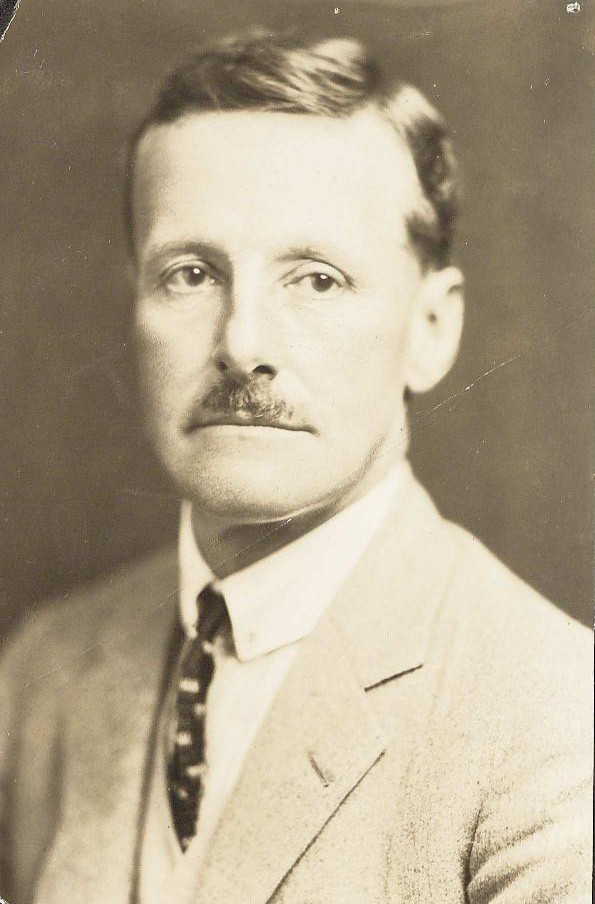 “Colonel John Leader is, above all things, modest, for he insists on saying, when asked about his life, ‘My hideous past?’ Why nothing exciting ever happened to me.” Passing over the fact that he has seen service with all the allies but one, has been an interpreter of Japanese, Chinese and German, Colonel Leader said, “I guess the thing I was most proud of was winning my ‘blues’ at college.” Blues are what Americans call letters meaning that Colonel Leader was a “letter man” at his school. He won letters in mostly everything. He was captain of the hockey, polo, soccer and lawn tennis teams.”
“Colonel John Leader is, above all things, modest, for he insists on saying, when asked about his life, ‘My hideous past?’ Why nothing exciting ever happened to me.” Passing over the fact that he has seen service with all the allies but one, has been an interpreter of Japanese, Chinese and German, Colonel Leader said, “I guess the thing I was most proud of was winning my ‘blues’ at college.” Blues are what Americans call letters meaning that Colonel Leader was a “letter man” at his school. He won letters in mostly everything. He was captain of the hockey, polo, soccer and lawn tennis teams.”
John Leader was born in Quetta, a high-altitude city in modern-day Pakistan, to Irish parents in 1877. He was born into a long line of military men; his father, Surgeon-Major John Leader, was a colonel who enjoyed a distinguished career in the British military service. He left India when a small boy, and journeyed to his family home in Ireland. The Leaders have an old moated hall at Keale in Cork, where the last fourteen John Leaders have lived. The old family name was Temple until the time of the Battle of Boynewater, when John Temple from Keale took such an important part in the conflict that King William renamed him Leader, and Leaders they have remained. Although born in India, Colonel Leader is thoroughly Irish, and has all the Irish humor of his ancestors.
Leader was educated at Wellington College (Berkshire), after which he then entered the Royal Military Academy at Sandhurst, becoming the thirteenth in a line of Leaders to serve in the British military. While at Sandhurst he was a cadet in the Bedfordshire regiment. His first official military assignment took Leader to Germany in 1896, where the polylingual Irishman served as an official interpreter. In 1898 he was back in Ireland on the military staff, and in 1899 he saw his first action in the field, when he was sent to South Africa as part of the influx of colonial troops fighting in the Anglo-Boer War. He won his way from the rank of second lieutenant to that of captain, which rank clung to him until WWI. “Shortly after I got that rank,” Colonel Leader said, “I became really ambitious, and wanted to be a major right away, so I worked awfully hard, then aftler I quit working I went right up.
From South Africa he was sent as part of an expeditionary party sent into China to quell the Boxer Rebellion, where he acquired the position of interpreter of Chinese. At the outbreak of the Russo-Japanese war, Colonel Leader was again in England, a teacher of mounted infantry. The war caused him to be sent to the Far East again, this time in the position of interpruter of Japanese. In 1907 he went from Siberia to India, and in 1908 fought in Arabia where he distinguished himself in the field.
Colonel Leader retired from active military service and relocated to Vancouver, British Columbia with his new English wife, Evelyn Pleydell-Bouverie, in 1909. Evelyn was the daughter of Colonel John Pleydell-Bouverie, former commander of the 17th Royal Lances, and the niece of the Earl of Radnor. In Canada, the colonel started an export/import business that flourished. The Leaders also started a family; their first two sons, Johnny and Michael, were born during their first period of residence in Canada.
Then World War I erupted in Europe, and Colonel Leader immediately returned to England. He was made captain of the staff at headquarters, and soon promoted to the rank of major, and then lieutenant-colonel.
From there he went to Ulster and recruited troops before taking command of the 16th Royal Irish Rifles within General French’s Ulster division in October 1914. He served two years on the front, one of the few veteran British officers to survive the period of intense warfare. Leader would finally be forced to leave the front in 1916 after being severely wounded at the Battle of the Somme when his position at Aveluy Wood was hit by 13 German shells. Though he wasn’t directly hit by the blasts, the shells collapsed the dugout, and Leader was crushed under the walls.
After recovering, Colonel Leader was placed in charge of an officers’ training camp. When the University of Oregon wrote to the British War Office in Autumn 1916 asking for a man to drill its troops, the office sent back a list of men that were available. The University selected Colonel Leader as the best man to have. Colonel Leader received this message from the president of the University of Oregon, Prince Lucien Campbell. Given permission to leave the military once again, Colonel Leader arrived in Eugene, Oregon with his family on December 30, 1917.
At the University of Oregon, Colonel Leader was hired to serve as a military instructor on campus. He worked to help train a university battalion for the war effort, arranging classes and causing trenches to be dug across the campus for training purposes. Both students and faculty were trained, staging exercises in the surrounding wilderness and learning to build bridges across the Millrace. Leader was instrumental in helping form the Reserve Officers Training Corps (ROTC) program at the university in 1918. Leader was the second-highest ranking British officer to reside in the United States during World War I, giving speeches throughout Oregon and preparing coastal communities for potential attacks from the Pacific. After the war, Colonel leader was also named an honorary full colonel of the Oregon National Guard for his service to the state. From the University Yearbook 1918:
In two weeks he had guns for the troops, had made arrangements for the only kind of uniforms practicable, and had the men drilling an hour a day, with four hours on Saturdays and lectures on three days a week. “A demon for work” is the opinion the student body had of him after he had been here only two days. His lecture course problem, the invasion of the Pacific coast, has made him famous – or notorious, he wonders which-all over Oregon. Some of the Portland papers attacked him for having given out this problem, mistaking what he had Fifty-Four.
It was all meant as a class exercise, and a military possibility, for a statement of fact that the invasion was coming. Colonel Leader is a polo enthusiast, and would like to see polo started at the ‘ University as one of the University sports. He achieved quite a name on the coast as a polo expert when he was at Vancouver several years ago. No military achievement of the Colonel can qulte equal his success ln the complete captivation of the students of the University. “Colonel John,” as he is affectionately named, is well nigh idolized, and there is not a member of the battalion who wouldn’t follow him into the thickest flght on the western front. The Colonel’s thorough frlendllnless, his impulsive enthusiasm, his restless energy, his gvenulne good humor-these and other admirable traits have won for him a high place in the hearts of students, faculty and friends of Oregon. If the Great War has done no other good thing, at least we can be grateful that it brought Colonel John to the University.
While in Oregon, his wife gave birth to their third son, Deryck. Though only in Oregon for a short period, the entire family would come to regard Oregon as a second home. Leader retired from the university in 1919 to relocate back to Vancouver, but returned to Oregon from his home in British Columbia for regular visits to the state. His later years in Canada were marked by a return to the import/export business, and he served for a period as the president of American Pacific Export Company.
In the 1920s he became involved in the Chautauqua movement in Canada, being one of its main promoters there, and gave a lecture tour in 1921 across Australia and New Zealand.
In 1922 he produced a memoir about his time at the University of Oregon, Oregon Through Alien Eyes. (see more below on the book).
At the outbreak of WWII, Colonel Leader again returned to London and became attached to the Intelligence Division where he was among other things in direct contact with General Charles de Gaulle. But he was still but is hoping to get a command “in the field!
(The Register-Guard, Eugene, Oregon, Sept 18th, 1939):
Word has just come from England regarding the activities Of Colonel John Leader and his family, who lived in Eugene during part of the first world war and for several years thereafter. Colonel Leader of the British army was sent to the University of Oregon campus shortly after America entered the conflict to assist in training student officers. The Colonel was busy on the campus until the end of the school year of 1918 and then assisted in the slate officers training camp.There was no ROTC at that time. Dean Eric W Allen of the university school of journalism received an airmail letter Monday from the British Isles, informing him that Colonel Leader is now attached to the Intelligence division but is hoping to get a command “in the field.” The Colonel’s eldest son, John Leader, Jr., is now an officer in the territorial army. Mrs. John Leader, Jr., an American-born girl and the Colonels daughter-in-law. is reported to be busy with air raid precautionary work. She is ARP warden for her district. The second son, Michael, who has been working for Standard Oil company down in the Persian Gulf, left for England immediately upon the outbreak of war. He had not yet arrived, according to the Colonel’s letter, nor has word been heard from him. He is believed to be interred in some neutral port along the Mediterranean. Derek Leader, who was born in Oregon, is a little too young to enlist, but is hoping to join his father’s regiment as soon as the Colonel can get transferred from Intelligence to field duty. Colonel Leader is well known in university and military molts in Eugene. He has made frequent trips back here during the last two decades, and corresponds with many friends.
All his sons survived WWII to live long lives.
After nearly a half-century of civilian life, Colonel Leader passed away at age 90 on March 8, 1967 at his home in Vancouver.
Refs:
- The Man who prepared Oregon for WWI
- University of Oregon Yearbook 1918 – page 59 and page 60
- The Register-Guard, Eugene, Oregon, Sept 18th, 1939 – page 8
=========
 Book: Oregon Through Alien Eyes
Book: Oregon Through Alien Eyes
by John Leader
Chapter1. When the Powers that be decreed my physical incapacity to return to the Bull ring of Flanders, three prospects dangled before my dazzled eyes, one administrative and carrying the shekels, but dooming me to be a non combatant soldier; another to command and English “officers training Corps”, carrying with it the certainty of advancement in rank, and the third to command the OTC of a western university, which carried neither much salary nor prospects of promotion, but involved a fifty-fifty chance of more active service; by the grace of God, I chose the right one, and left the general hospital at Cambridge to cross over to the States.
A solider who combines anvancing years with a game leg, is always rather an incongruous figure; when I returned, crumpled from the Boer War, I could make spirited efforts at posing as a young hero, but that era was past, and the only amusement I could get from my trailing hind leg, lay in the memory of a popular vaudeville song of my youth, describing a gentleman, who had inadvertently married a lady with a wooden leg, and used to sing to her:
“You’re not a bit of use to me,
You’re half a womand and half a tree.”
The troopship, the “Justicar”, took us to …
You can read the full book “John Leader, Oregon Through Alien Eyes (Portland: Meier and Frank, 1922). F881.L43 1922b.” by buying one of the new reprints (2016), or viewing it online at either:
- the Hathi Trust Library, or from
- Archive.org
=========
 Colonel Leader’s March
Colonel Leader’s March
By Albert Perfect; “Dedicated to Col. John Leader, late commander, Royal Irish Rifles, Commandant, University of Oregon Battalion”
“So here’s to Colonel Leader, hurrah!
A fighting true defender of freedom’s righteous law
He’s in the fight to win with spirit brave and calm,
So let us hail with pride out hero of the Somme.”
It’s a tune to his name – a march for piano with words – sheet music and lyrics (or below at the bottom)
==============================
====== Other bits and pieces ======
SOCIETY WEDDINGS
John Leader, son the late Mr. John Leader, J.P., of KeaJe, and Mrs. Leader, of Roxborough, co. Cork, was married to Miss Eveline Pleydell-Bouverie, daughter of Lieut.-Col. the Hon. J. Pleydell-Bouverie and Mrs. Pleydell-Bouverie, and cousin of the Earl Radnor.
Ref: Leeds Mercury West Yorkshire, England – 26 Mar 1909
======
1914: … political influence could do nothing to remedy the shortage of experienced officers in the 16th (Irish) or 36th (Ulster) Divisions. In the 16th Battalion, Royal Irish Rifles, there was only one retired regular officer, the C.O. Major John Leader…
Ref: the discipline and morale of the expeditionary force in France and Flanders 1914-1918
=======
Banbridge, Co. Down
… Other speeches were made by Mr. S. G. Fenton, J.P.; Captain W. J. Allen, J.P.; and Major John Leader. At the close of the meeting two officers remained in attendance for the purpose of receiving new recruits, quite a number of men coming forward at the close of the meeting and joining the new battalion.
Ref: The Witness – 6th Nov 1914
========
LADY CARSON IN LURGAN
Recruits Inspected at Brownlow House.
On Friday afternoon the 16th Battalion Royal Irish Rifles (2nd County Down Battalion, Ulster Volunteers), at present in course of formation at Brownlow House, Lurgan, was favoured with a visit, from Lady Carson, wife of the esteemed leader of the Irish Unionist party. Accompanied by Lieutenant-Colonel Craig, Assistant-Adjutant and Quartermaster-General of the Ulster Division, and Mrs. Craig, Lady Carson motored from Belfast, and on arrival found the officers and men of the new battalion numbering 335, drawn up on parade on the gravel drive fronting the mansion. As the visit was purely informal, there was no demonstration, and the townspeople were not aware of her presence in their midst. Having been received with the general salute, Lady Carson inspected the battalion, on whose soldierly bearing she subsequently congratulated the commanding officer, Major John Leader. The other officers on parade were — Captain and Adjutant W. J. Allen, J.P.; Captains R. Gardiner and W. Collins, Lieutenant and Quartermaster A. Forsythe, Lieutenant R. W. Lacey, Second-Lieutenants F. H. Shepherd, T. J. White, G. Barton, S. Platt, E. Somerfield, J. S. Elliott, H. L. Dickson, A. Green, and N. M’Keown, and Sergeant-Major J. Bell. Lady Carson, along with Lieutenant-Colonel and Mrs. Craig, Mrs. Leader (wife of the commanding officer), Mrs. W. J. Allen, Mrs. J. Simpson (Scarva), and Miss Allen were subsequently entertained to luncheon by Major Leader and the officers of the battalion. Afterwards her ladyship was escorted through the several apartments in the barracks, and later in the evening she left for Belfast.
Ref: The Witness – Friday, 4 December, 1914
======
====
PORTABLE BRIDGE
A Hirhe portable bridge, especially fitted for military use ia field campaigns, has
been invented bv E. H. MrAlliator. engineering professor at the Uni-
versity ot Oregon. Colonel John Leader, retired English army man,
in charge of military training at that university, praises tha bridge high
ly, and says it ia just the thing for infantry advancing quickly over land
cut by frequent streams. Colonel Leader has written Secretary of War
Baker recommending tha adoption of the bridge by Uncle Sam’s forces.
Ref: Chronicling America 7th March 1918
=====
![]() In the U.S. Census of 1920 he was still living lived in Ardenwald, Oregon, in 1920.
In the U.S. Census of 1920 he was still living lived in Ardenwald, Oregon, in 1920.
=====
…He rendered such valuable such valuable service that he was made
Hon. Colonel of the Oregon National Guard. He is said to have some
interesting theories to advance on the “Yellow Peril”. He is a brilliant
forum speaker, and tells many humored stories…
Ref: Traralgon Record, Australia – 5th August 1921
(“Yellow Peril” – The Yellow Peril (also Yellow Terror and Yellow Spectre) was a color-metaphor that is conceptually integral to the xenophobic theory of colonialism; that the peoples of East Asia are a danger to the Western World.)
=====
Nov 1921, speaking in Melbourne, Australis
AUSTRALIAN CHAUTAUQUA
Col. Leader on World Problems
“Socialists arc only Bolsheviks with a shave. I advise you to watch these par-
lour Bolsheviks who talk about giving Russia credit for good intentions, about
the downtrodden proletariati and such like. You will find them sometimes among. Uni-
versity professors, among professional men of every kind, and among other workers
with clean collars.” With this warning Colonel John Leader dealt with, what he
considered the greatest menace facing the World at the present time, in a lecture at
the Atbeiiauim Hall last night on “Reconstruction Problems viewed Through Anglo
Saxon Eyes.” His address was the Fea tuie of the third session of the series of
Chautauqun entertainments, which will conclude in the city this evening.
Italy, said Colonel Leader, nearly met the same fate as Russia. She was becom-
ing “Red,” but was saved just in time by the Fascisti, which included the returned
soldiers and the more sober-minded citizens, in an address liberally interspersed
with anecdotes, both grave and gay, of war service mid its sidelights in South
Africa, France, and Gallipoli, the lecturer touched on some of the post-war problems
facing Groat Britain and tlie European countries. He wsa convinced that it was possible to abolish war…
Ref: The Argus, Melbourne, 1st Dec 1921
=====
…. Main personnel concerned with Chautauqua were: Colonel John Leader (England), Harold R Peat (Canada), Dr F L Loveland (New York), and Mr J C Herbsman (America). Music groups playing in New Zealand were: The Fine Arts Trio (America), McKenzie Concert Company (Australia and New York), the Winifred Windus Trio (Auckland and America), and the Arcadian Quartette (Australia)…
=======
He was remembered in Congress this year, a hundred years after he arrived at the Univesity:
100th Anniversary of the Reserve Officers’ Training Corps at the University of Oregon
… President Campbell established the first ROTC curriculum at
the University of Oregon, placing a retired British military officer–
the appropriately named Lieutenant Colonel John Leader–in charge. More
than 100 students participated in the first drill in March 1916The University of Oregon ROTC program commissioned its first officers
in 1919, after the Allied victory in World War I, and the unit has …
Ref: US Congress 2016 Senate transcript
=========
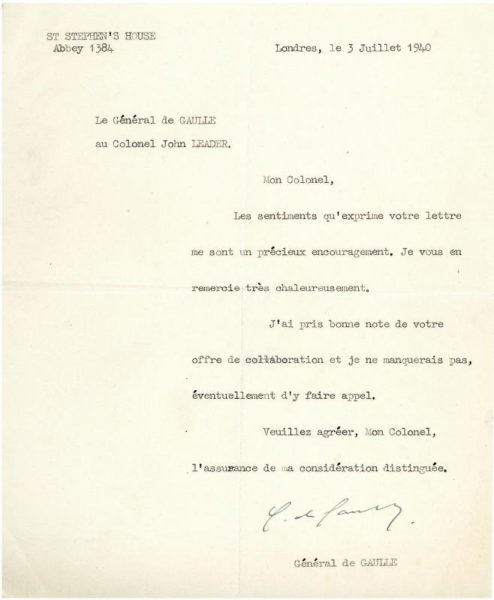 Letter from General Charles DeGaulle to Colonel John Leader 3rd July 1940 [ref]
Letter from General Charles DeGaulle to Colonel John Leader 3rd July 1940 [ref]
=========
Family
Col. Leader’s father was The Surgeon Major John Leader, of Keale, Co. Cork, who served in the 2nd Batt. 19th Regt., J.P. en. Cork, b. 23 June, 1843 ; married 26 Aug. 1875, Annie Margaret, eldest dau. of Robert McMurray, J.P., of Roxborough House, co. Limerick. and d. 12 Sept. 1892 in Cahir (he is buried in St.Anne’s graveyard, Millstreet)
He had three siblings
- Robert Ripley Leader, Lieut. West India Regt., b. 15 March, 1878.
- Kathleen, and
- Winifred, d. 1881.
He married Eveline Pleydell-Bouverie on 25th Mar 1909 at St. John’s Church, Westminster, England, and they had three children:
- John Temple Bouverie Leader (Johnny) (June 9, 1913 – Feb 5, 2008)
- Michael Edward Basil Leader ( Sept 29, 1915 – 1998)
- Deryck Pleydell Leader (Feb 1, 1922 – 2002)
Full Family history on Genealogical and Heraldic History of the Landed Gentry of Ireland, 1912
Grandson John J Leader died in April 2016 – he maintained the adventeror spirit in the family
family lineage:
http://www.connorshistory.com/Connors/LeaderCleburne.html
Ancestry:
http://person.ancestry.co.uk/tree/28375738/person/12035470041/facts
http://person.ancestry.co.uk/tree/27325089/person/12158854118/gallery
=======
Photos
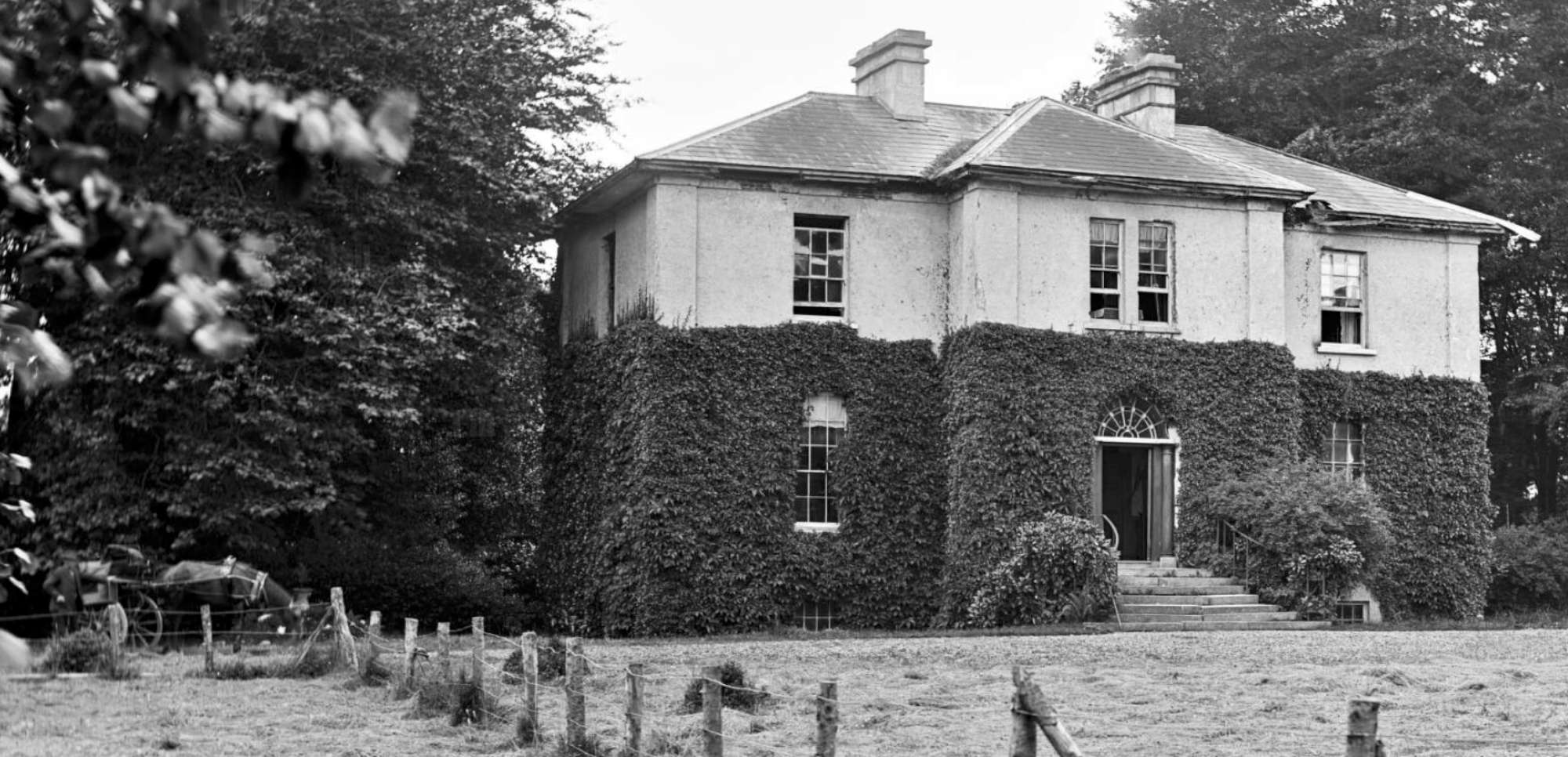
=======
The Colonel Leader March:

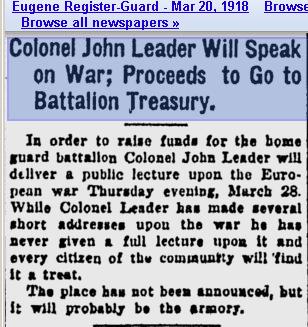
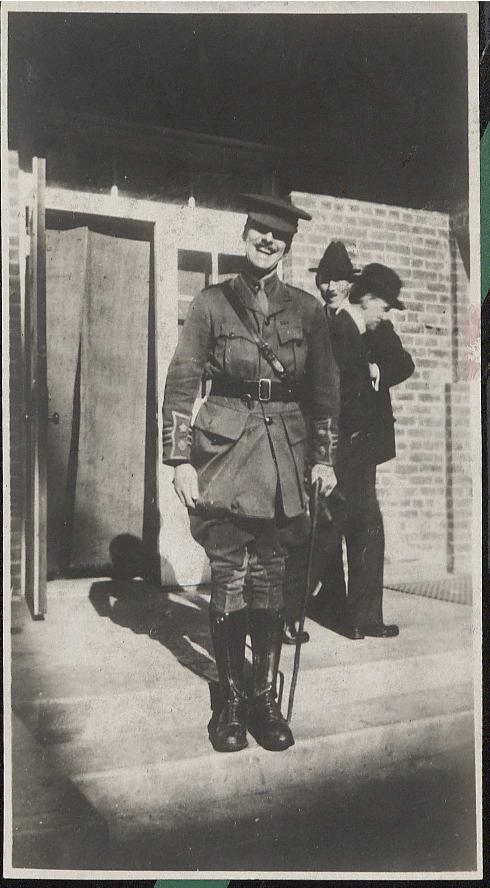
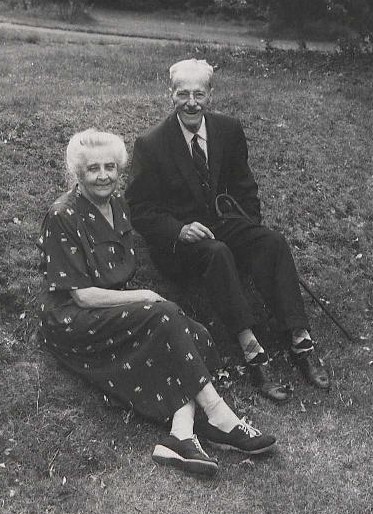
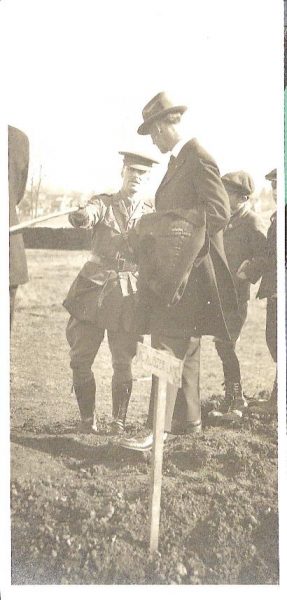
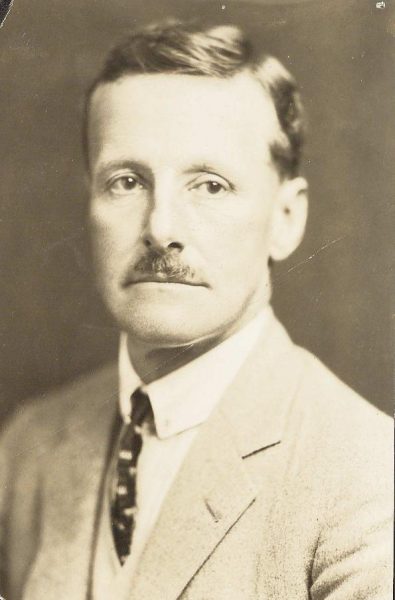
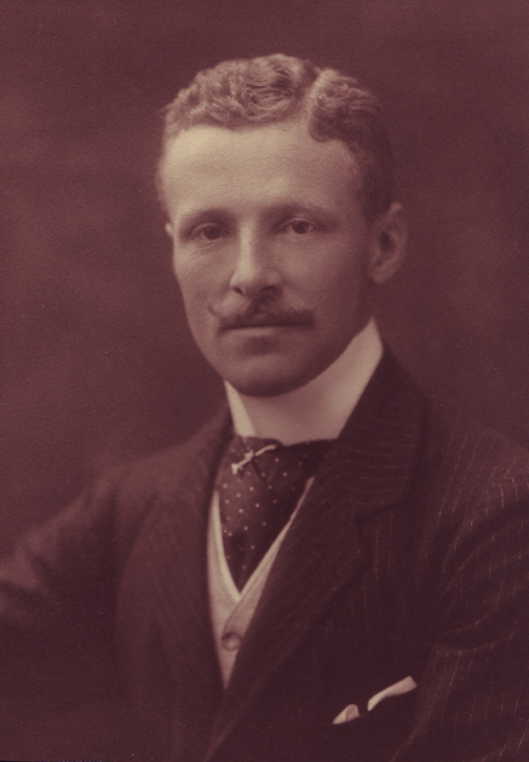

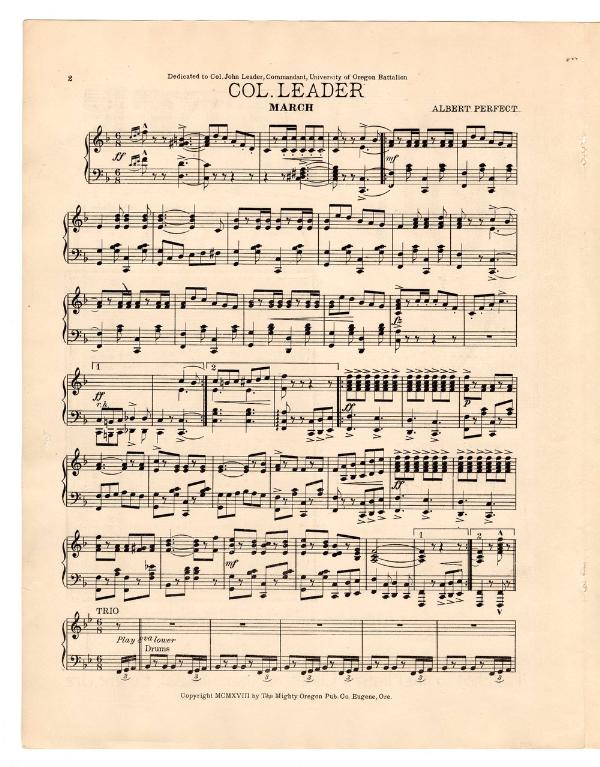
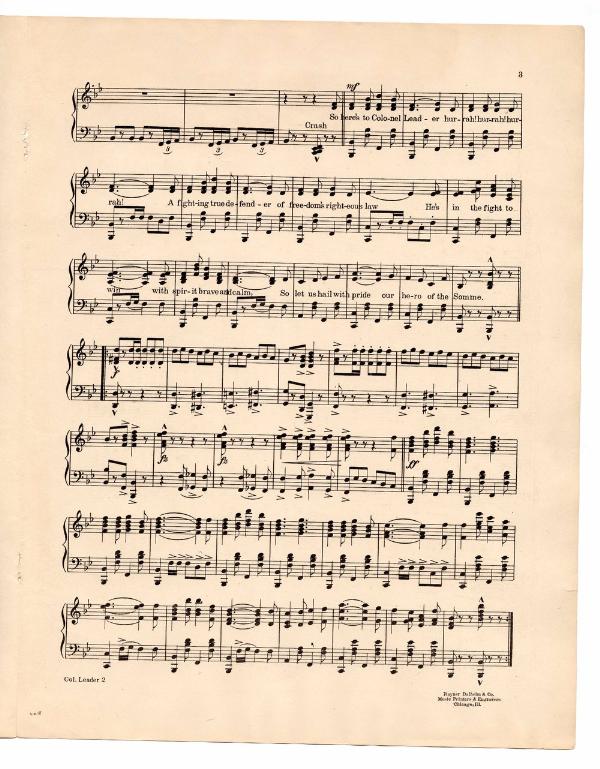
Hi Michael. I am Colonel Leader’s grandson through Deryck Leader. This is a lovely summation of his life. What is your interest in his story?
Best wishes. Geoff
Hi Geoff, thanks for getting in contact. I’ve been trying to do a piece on each of the millstreet people that took part in WWI. Most have been long forgotten, and we feel it appropriate that they are remembered 100 years later. For a war that seems so distant, I have come across about 50 that took part thus far.
For political reasons they were ostricised so their stories were rarely heard.
For me it’s a fascinating local history project